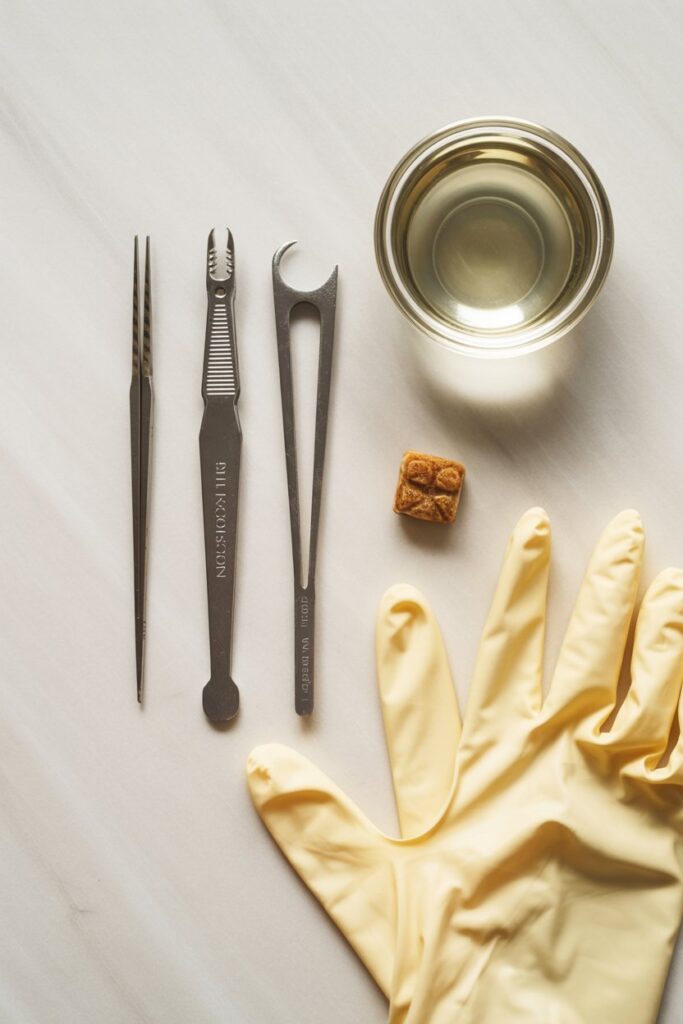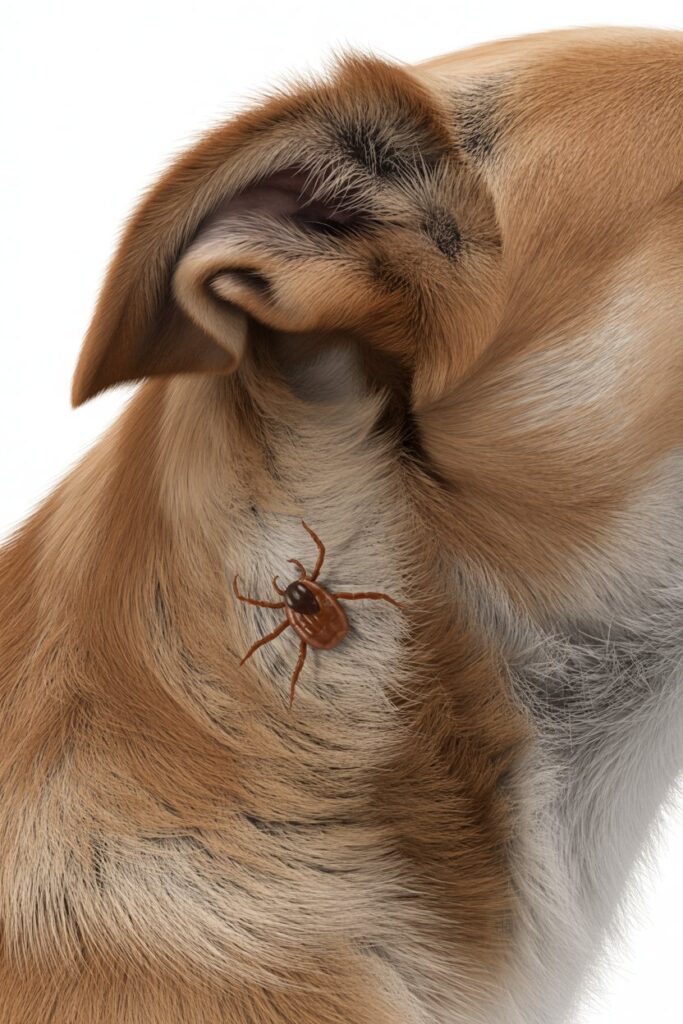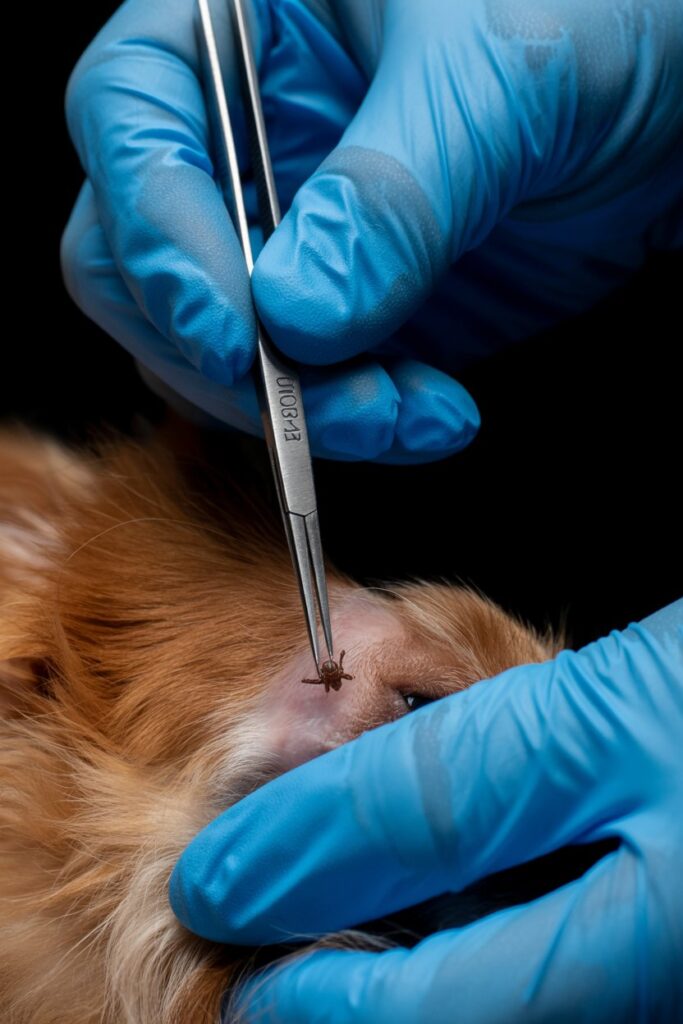Removing ticks from your dog may seem easy, but doing it wrong can harm your pet. Ticks aren’t just annoying; they can spread serious diseases like Lyme disease and ehrlichiosis.
That’s why proper removal is vital for your dog’s health.
If your dog spends time outdoors, especially in grassy or wooded areas, the chance of tick bites rises. In this blog, we’ll show you how to safely remove ticks using veterinarian-recommended methods.
You’ll learn how to spot ticks early, remove them safely, and protect your dog from future infestations. This way, your furry friend stays healthy, happy, and free from harmful parasites.
Gather Your Tools

Before you start, gather these items: tweezers, gloves, antiseptic, and a container. These tools help you safely remove ticks from your dog without causing harm or infection.
Wearing gloves protects you from diseases ticks may carry. Use tweezers to grab the tick close to your dog’s skin. This ensures you remove the entire tick, including its head.
Antiseptic cleans the bite area after removal, which helps prevent infection. A container is handy for storing the tick if you need to show it to a vet for identification or testing.
Discover trusted tick removal tools available now on Amazon
Find the Tick

Check your dog’s body for ticks, especially in hidden spots like the ears and between the toes. Ticks often hide there, so be thorough. A comb can help you find them.
Ticks can carry diseases that harm your dog. Remove them quickly when you find them. Use tweezers or a tick removal tool to grasp the tick close to the skin. Pull it out steadily.
After removing a tick, clean the area with antiseptic. Watch for any signs of infection. Regular checks and removals can keep your dog healthy and safe from tick-borne illnesses.
Remove the Tick

To remove a tick from your dog, gently pull it out with tweezers. Make sure to pull straight out without twisting. This helps avoid leaving parts inside, which can lead to infections.
After you remove the tick, clean the bite area with soap and water. You can also use an antiseptic to reduce the risk of infection. Watch for signs of redness or swelling, as these may indicate an infection or reaction.
It’s smart to wear gloves when handling ticks. This protects you from any bacteria they might carry. Dispose of the tick by placing it in alcohol or flushing it down the toilet to prevent it from coming back or harming others.
Shop vet-recommended tick removers for dogs directly on Amazon
Clean the Area

After removing the tick, clean the bite area with an antiseptic. This helps prevent infections and keeps your dog’s skin healthy.
Use a cotton ball or clean cloth to apply the antiseptic gently. This will kill any bacteria left by the tick, lowering the risk of infection.
If you see swelling, redness, or other unusual symptoms, contact your vet immediately. These signs might indicate an infection or another issue needing attention. Monitoring the bite area is vital for your dog’s health.
Dispose of the Tick

After you remove a tick from your dog, put it in a small container with a tight lid. This keeps it from escaping or spreading diseases. Don’t crush the tick with your fingers; it might release harmful pathogens.
You can kill the tick by soaking it in rubbing alcohol before throwing it away. This ensures it’s no longer a threat. Always wash your hands well after handling ticks to avoid infections.
If you want, you can save the tick for identification. Place it in a sealed bag with a moist cotton ball. This can help if your dog shows signs of tick-borne diseases later. Remember to label the bag with the date and where you found the tick.
Check out top-rated tick removal kits today on Amazon
Monitor Your Dog

After removing a tick from your dog, watch for signs of illness. Look for symptoms like lethargy, loss of appetite, or fever. If you see any of these, contact your vet right away.
Ticks can carry diseases that may not show symptoms immediately. Keep an eye on your dog for a few weeks after removal. Early detection can lead to better treatment.
Check the spot where the tick was removed for signs of infection, like redness or swelling. Keeping the area clean and observing your dog’s behavior helps identify any health issues early.
Conclusion
Removing ticks from your dog is crucial for their health and comfort. Follow these simple steps to keep your furry friend tick-free.
Regular checks and quick action can prevent tick-borne diseases. Keep your dog safe and happy with these tips.
How Do I Safely Remove A Tick From My Dog?
To remove a tick, first put on gloves. Use fine-tipped tweezers or a tick removal tool. Grasp the tick close to your dog’s skin. Pull it out slowly without twisting.
This method helps to remove the tick completely, including its head. After removal, clean the area with antiseptic. Monitor for any signs of infection.
Can Ticks Make My Dog Sick?
Yes. Ticks can spread diseases like Lyme disease, ehrlichiosis, and anaplasmosis. These illnesses may cause fever, joint pain, lethargy, and loss of appetite.
Even if your dog seems healthy after a bite, watch for symptoms for several weeks. Some tick-borne diseases take time to show signs.
How Can I Prevent Ticks On My Dog?
Using vet-recommended tick preventatives is key. This includes topical treatments, oral medications, or tick collars.
Keep your yard trimmed and avoid tall grass during peak tick season. Also, check your dog’s fur after outdoor activities. Preventative care lowers the risk of tick bites and disease.
Should I Save The Tick After Removing It?
Save the tick in a sealed bag with a moist cotton ball if you want your vet to identify it. Knowing the tick species helps your vet assess disease risks.
If you don’t want to keep it, dispose of it in alcohol or flush it down the toilet.
When Should I Call The Vet After A Tick Bite?
Call your vet if the bite area swells, turns red, or has discharge. Also, reach out if your dog shows signs like fever, limping, or loss of appetite weeks after a tick bite.
Early diagnosis and treatment of tick-borne diseases can help recovery.
